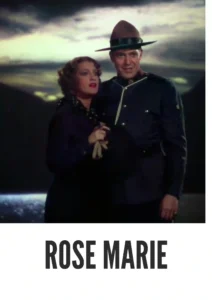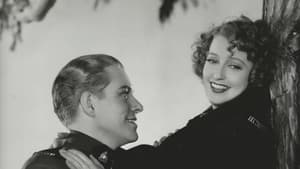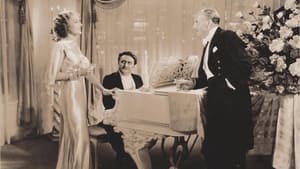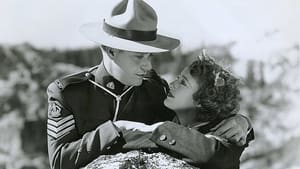Video Sources 0 Views
- Watch trailer
- Rose Marie 1936 Colorized


Synopsis
Table of Contents
ToggleLove in the Canadian Rockies: Rose Marie (1936) in Stunning Color

Immerse yourself in the sweeping romance and adventure of Rose Marie, a beloved musical from 1936, now beautifully colorized for a viewing experience that brings the Canadian wilderness to life. Starring Jeanette MacDonald and Nelson Eddy, this film, also known as Indian Love Call, delivers a timeless tale of love, loyalty, and the great outdoors. Perfect for fans of classic musicals and those seeking a grand romantic adventure, this HD download offers a chance to rediscover a cinematic treasure.
Rose Marie Storyline: A Singer’s Quest and a Mountie’s Duty
Rose Marie tells the story of Rose Marie (Jeanette MacDonald), a famous opera singer who journeys to the Canadian Rockies to find her fugitive brother, Jack. Along the way, she encounters Sergeant Bruce (Nelson Eddy), a handsome Royal Canadian Mounted Police officer tasked with bringing Jack to justice.As Rose Marie and Bruce navigate the rugged terrain and the dangers of the wilderness, they find themselves drawn to each other. Torn between her loyalty to her brother and her growing love for Bruce, Rose Marie must make a difficult choice. Meanwhile, Bruce is conflicted between his duty to uphold the law and his feelings for Rose Marie. The film culminates in a dramatic climax that tests their love and their commitment to what is right. Rose Marie is a sweeping romantic adventure that celebrates the power of love and the beauty of the natural world.
Movie Cast
The film features a stellar cast of actors who bring this romantic adventure to life:
- Jeanette MacDonald as Rose Marie
- Nelson Eddy as Sergeant Bruce
- Reginald Owen as Myerson
- Allan Jones as John Flower
- James Stewart as Second Radio Announcer (uncredited)
Movie Genre
Rose Marie falls into the genre of musical romance, with elements of adventure and drama that are characteristic of classic Hollywood productions. Its sweeping score, stunning scenery, and heartfelt performances make it a captivating and engaging film.
Historical Context: MGM’s Musical Golden Age
Released in 1936, Rose Marie represents a highlight of Metro-Goldwyn-Mayer’s (MGM) golden age of musicals, showcasing the studio’s lavish production values, talented performers, and crowd-pleasing storytelling. The film was a major box office success, solidifying Jeanette MacDonald and Nelson Eddy’s status as one of Hollywood’s most beloved on-screen couples. Rose Marie reflects the escapism and optimism that defined much of American cinema during the 1930s, offering audiences a temporary escape from the hardships of the Great Depression.
Colorization Details
This colorized version of Rose Marie has been meticulously restored using modern digital techniques, enhancing the visual appeal while preserving the film’s original charm and grandeur. The colorization process involved carefully analyzing the grayscale tones of the original black and white footage and assigning appropriate colors to each scene. While the specific software used remains proprietary, the techniques employed included advanced algorithms for color palette selection and image enhancement. This painstaking process brings new life to the characters and settings, making the story even more engaging for modern audiences. While some may debate the merits of colorizing classic films, it introduces these films to a broader audience, ensuring their legacy for future generations.
Technical Details
- Director: W. S. Van Dyke
- Screenplay: Frances Marion, Albert Hackett, Alice Duer Miller
- Based on: the play Rose-Marie by Otto Harbach and Oscar Hammerstein II
- Cinematography: William H. Daniels
- Edited by: Blanche Sewell
- Production Company: Metro-Goldwyn-Mayer (MGM)
- Distributed by: Metro-Goldwyn-Mayer (MGM)
- Runtime: 113 minutes
Technical Specifications
- Download Format: MP4
- Resolution: HD (1080p)
- Compatibility: Compatible with most devices, including smartphones, tablets, computers, and smart TVs.
Reviews and Critical Reception
Rose Marie (1936) is celebrated for its sweeping romance, memorable songs, and stunning scenery, solidifying its place as a classic of the musical genre. Jeanette MacDonald and Nelson Eddy’s on-screen chemistry is a highlight, and the film’s production values are top-notch for its time. As a beloved and enduring film, Rose Marie offers a delightful escape into a world of romance, adventure, and music.
FAQs
- Q: What is Rose Marie about?
- A: Rose Marie is a romantic adventure about an opera singer who falls in love with a Mountie while searching for her fugitive brother in the Canadian Rockies.
- Q: Is Rose Marie (1936) a well-known musical film?
- A: Rose Marie is a classic and beloved musical, known for its memorable songs and the on-screen chemistry of Jeanette MacDonald and Nelson Eddy.
- Q: Is this version of Rose Marie colorized?
- A: Yes, this version has been professionally colorized to enhance the viewing experience.
- Q: What makes Rose Marie interesting for classic film fans?
- A: Rose Marie offers a glimpse into the golden age of Hollywood musicals, showcasing lavish production values and timeless storytelling.
- Q: What is the download format?
- A: The download format is MP4, which is compatible with most devices.
- Q: What resolution is the download?
- A: The resolution is HD (1080p), providing a high-quality viewing experience.
Download Now in HD!
Watch Rose Marie Today!















